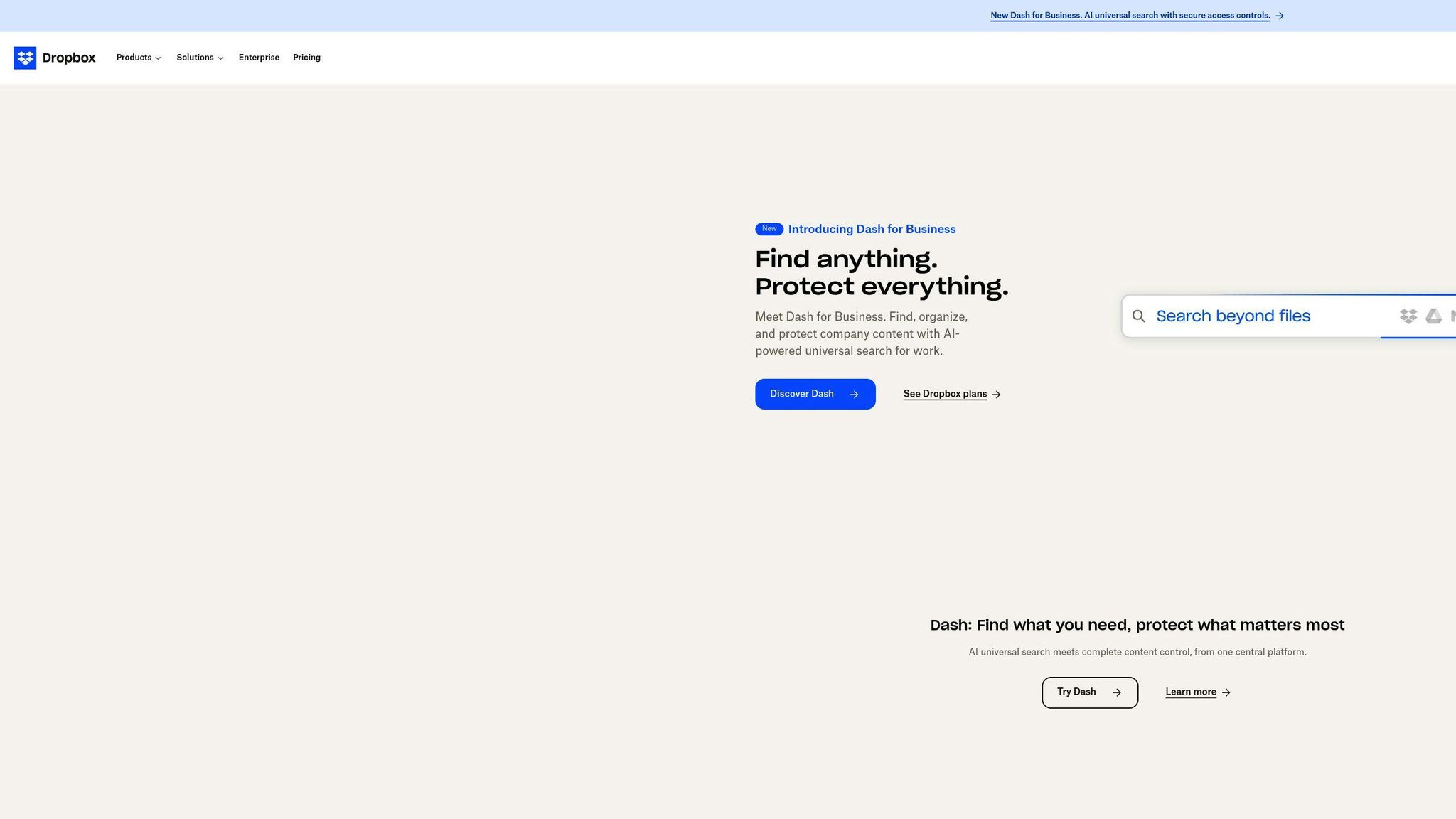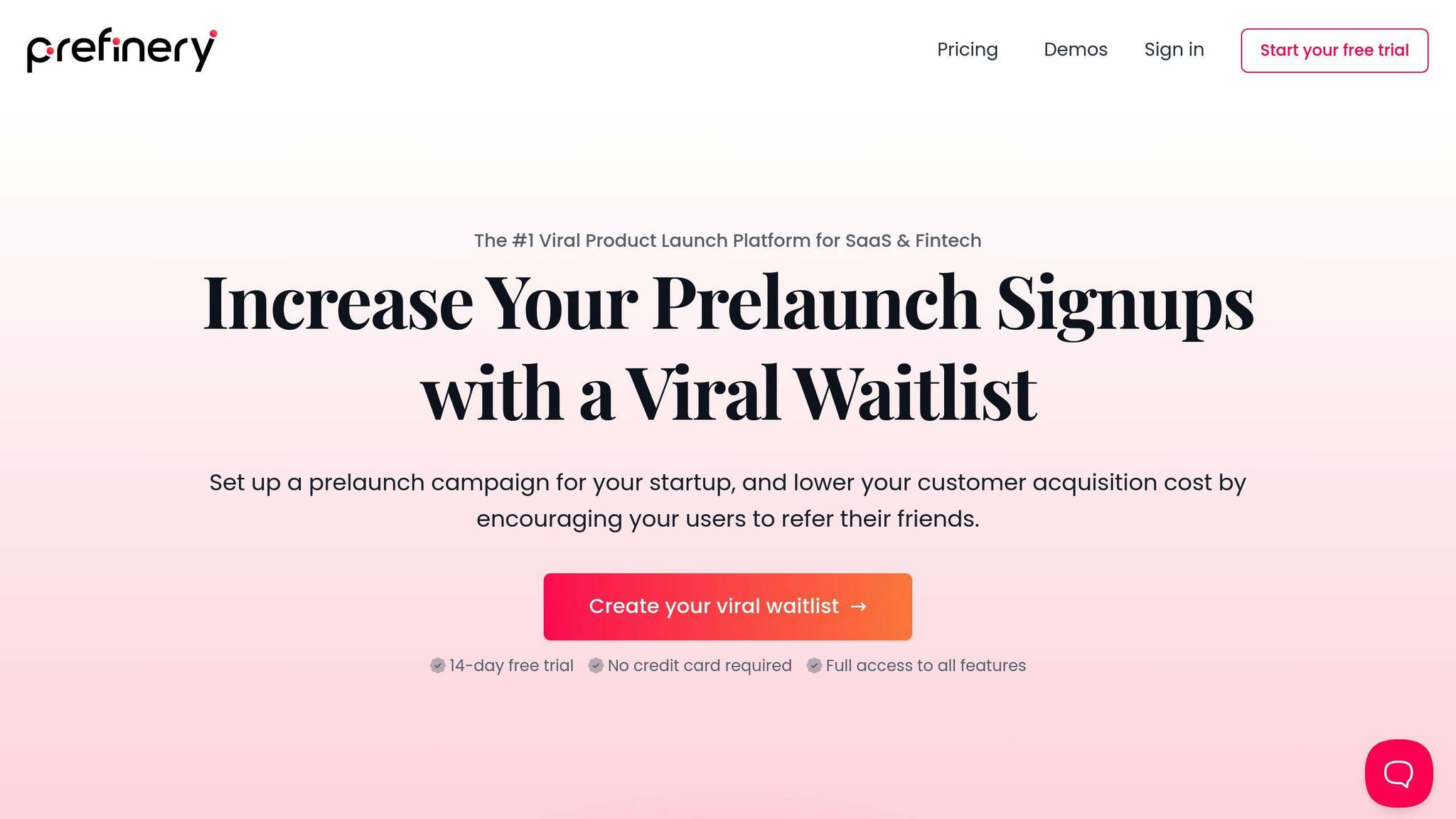Dropbox Referral Program: 3900% Growth Study
Explore the strategies behind a referral program that achieved 3900% growth in 15 months, transforming user acquisition through effective incentives.

Justin Britten

Dropbox's referral program drove 3900% user growth in just 15 months, growing from 100,000 to 4 million users. Here's how they did it:
- Double-Sided Rewards: Both referrers and invitees received 500MB of free storage, making the rewards mutually beneficial.
- Seamless Sharing: Users could easily share referral links through email or social media, integrated directly into the platform.
- Clear Incentives: Transparent rules and rewards built trust and encouraged participation.
- Viral Growth Loop: The referral program was embedded in onboarding and key moments, like when users hit storage limits, creating a self-sustaining cycle of referrals.
This strategy kept costs low while leveraging user advocacy for rapid growth. SaaS startups can replicate this approach by aligning referral incentives with their product's core value, simplifying the sharing process, and automating reward delivery.
Strategies Used in Dropbox's Referral Program

Double-Sided Rewards
Dropbox's referral program offered storage-based incentives that directly addressed user needs. Initially, both existing users and their referred friends received 250MB of extra storage, which was later increased to 500MB. This approach ensured that both parties benefited equally, encouraging participation from everyone involved.
Simplified Referral Sharing
Dropbox made sharing referrals incredibly simple by integrating referral links directly into its platform. Users could easily share these links during sign-up, removing common barriers and making the process seamless.
Transparent Rewards
The program clearly outlined the rewards, the steps to earn them, and any restrictions. This transparency helped eliminate confusion and built trust among users.
Building a Viral Loop
One of Dropbox's smartest moves was tying the referral program to the onboarding process. Users were introduced to the program during moments of high engagement, like when they first signed up or when nearing their storage limits. This created a viral loop: users experienced the benefits, shared referrals, and brought in new users who continued the cycle.
These strategies helped Dropbox create a referral program that not only scaled effectively but also kept users happy. The next section will explore how these tactics translated into measurable growth.
Results and Impact of Dropbox's Referral Program
3900% Growth in 15 Months
Dropbox's referral program catapulted its user base from 100,000 to 4 million in just 15 months - a staggering 3900% growth rate. This explosive increase highlighted how referral programs, when crafted thoughtfully, can drive viral growth.
The momentum didn’t stop after the initial launch. Rewarding users with extra storage kept both current and new users engaged, proving the program's design was spot-on for long-term success.
Affordable User Acquisition
Dropbox's referral program turned out to be a game-changer for keeping customer acquisition costs low. Instead of relying on expensive marketing campaigns, the company tapped into its existing users, turning them into advocates who brought in new signups.
The program worked so well because it combined organic growth through peer recommendations with low-cost incentives (extra storage) and seamless scaling through platform automation. This strategy became a model for other SaaS companies aiming for fast growth without overspending on marketing.
Dropbox’s success shows how referral programs can become a powerful tool for startups, offering a path to rapid expansion while keeping costs under control. It’s a clear example of how leveraging user advocacy can fuel sustainable business growth.
Insights for SaaS Startups
Simple User Experience
Dropbox's smooth user experience played a big role in its referral success. By offering multiple sharing options on a single page, users could sync email contacts and invite friends without ever leaving the platform. SaaS startups should focus on naturally weaving referral opportunities into the onboarding process. Make sure users can easily access sharing options from one interface. Pay close attention to referral activity during onboarding - this is when users are most engaged and eager to explore.
Use Double-Sided Incentives
Dropbox nailed it with their 500MB storage reward for both the referrer and the referee. This type of equal reward system avoids any awkwardness and ensures both parties feel like they’re winning. For SaaS startups, consider offering rewards with these qualities:
| Reward Characteristic | How to Implement It |
|---|---|
| Immediate, Relevant Value | Align rewards with your product's main benefits and deliver them quickly. |
| Scalability | Automate reward distribution to handle growth without overloading your resources. |
| Profitability | Structure rewards to boost growth while keeping your margins intact. |
Create Viral Growth Loops
Dropbox’s strategy stood out by embedding viral mechanics directly into the product experience. Each referral didn’t just bring in a new user - it also created another potential advocate, setting off a self-sustaining growth loop.
SaaS startups can use tools like Prefinery to integrate sharing opportunities at key moments in the user journey. For instance, after a user hits a major milestone or experiences a standout feature, prompt them with easy-to-use sharing options.
To make these strategies work, choose tools that support scalable and customizable referral programs. They’ll help you build a system that grows with your product.
Tools for Implementing Referral Programs
Creating a referral program like Dropbox's requires dependable software that can handle growth without technical headaches. Today’s platforms make this process much easier, helping SaaS startups replicate successful strategies.
Prefinery

Prefinery is a powerful tool designed to simplify referral programs. It offers features like real-time tracking, automated emails, and flexible reward options, all of which align with the tactics Dropbox used to grow its user base.
Here’s a breakdown of Prefinery’s standout features and how they help:
| Feature | How It Helps |
|---|---|
| Referral Tracking | Monitors performance and provides detailed referral chain analytics in real time |
| Automated Emails | Sends timely messages to encourage participation and engagement |
| Analytics Dashboard | Offers insights to fine-tune your referral strategies |
| Customizable Rewards | Allows testing of different rewards to find what works best |
| Integration Options | Easily connects with your existing tools through APIs and SDKs |
These tools let startups pinpoint their best-performing referral channels and make data-backed adjustments, much like Dropbox did to refine its program.
If you’re using Prefinery to build your referral program, keep these tips in mind:
- Embed Referral Touchpoints: Add sharing opportunities during moments of high user engagement, just as Dropbox did.
- Automate Reward Delivery: Set up instant reward fulfillment to motivate both referrers and invitees, following Dropbox’s approach of delivering immediate value.
- Track Key Metrics: Leverage the analytics dashboard to monitor conversion rates and costs, so you can continuously improve your program.
With Prefinery, SaaS startups can create referral programs that are easy to manage and scale, driving growth just like Dropbox achieved.
Conclusion
Key Points
Dropbox's referral program is a standout example of how well-planned incentives can drive massive growth. The company's 3900% growth in just 15 months was the result of a carefully crafted approach, not random chance. By focusing on meaningful rewards, an easy-to-use experience, and a self-sustaining viral loop, Dropbox set a benchmark for SaaS startups aiming to scale through referrals.
Advice for SaaS Startups
If you're looking to achieve similar results, here are some practical tips:
- Integrate referral opportunities during key moments, like onboarding, to maximize engagement.
- Make sharing as simple and effortless as possible.
- Offer rewards that add real value to both the referrer and the recipient.
- Use analytics to track performance and fine-tune your program over time.
"The more visible and accessible a referral program is, the higher the participation rates will be." - Strategy Breakdowns
FAQs
Here are answers to some common questions about Dropbox's referral program and what it can teach SaaS startups:
How much did Dropbox grow through its referral program?
Dropbox grew by an incredible 3900% in just 15 months by using double-sided rewards, easy sharing, and a clear value proposition. This approach worked because it met user demands (extra storage) while creating a viral loop where users kept inviting others.
How does Dropbox's double-sided reward system work?
Both the person making the referral and the new user benefited. Each received 500MB of free storage per referral, and referrers could earn up to 16GB of storage in total.
What metrics show a referral program is successful?
Key metrics include the rate of user growth, conversion rates from referrals, and cost savings compared to traditional advertising methods.
These examples highlight how a well-designed referral program, like Dropbox's, can align with user needs while driving significant growth.
